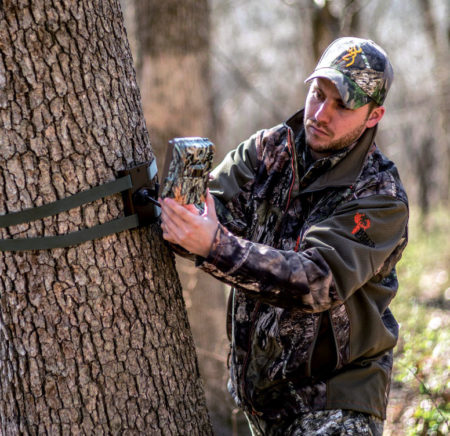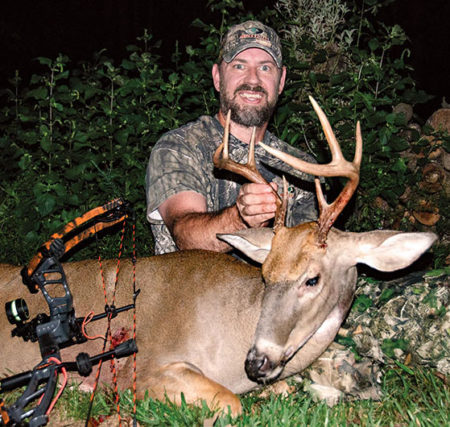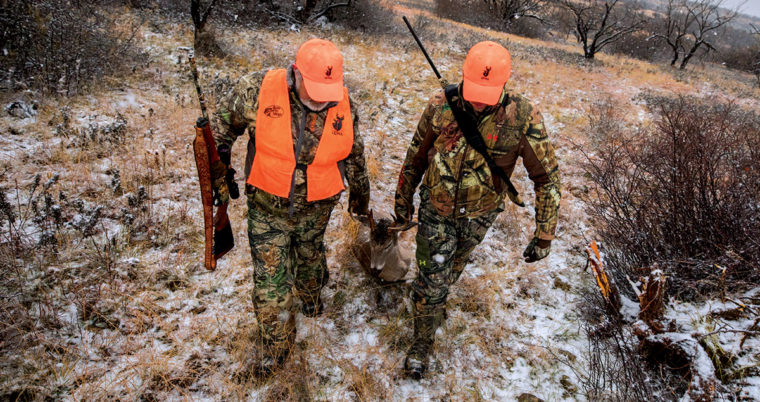Setting realistic expectations based on your personal experience and circumstances is key to keeping hunting fun and enjoyable. Here are some tips to ensure you are keeping it real this deer season.
As communications manager for the National Deer Association, I spend my fair share of time on social media. More than I care to admit. When deer season rolls around, my news feeds fill up with pictures and stories of hunters killing giant whitetail bucks. Now don’t get me wrong, I love to see and hear about other people’s hunting success. For me, it’s a constant reminder that every trip to the stand could be my chance to pose for the hero shot.
But just like the medications in late night infomercials, those great photos and stories can have side effects. Combine them with a healthy dose of your favorite outdoor television shows and you’ll soon start thinking you’re the only one not knocking down a big buck with a cool nickname. The end result can be unrealistic expectations, frustration and unfilled tags.
There’s nothing wrong with having lofty goals for the upcoming deer season. You just need to make sure they’re realistic and you’ve made them for the right reasons. Some of you may know exactly what you’re after this season. If so, great! But if you’re not sure or haven’t given it much thought, don’t fret. Take some time between now and opening day to consider the following factors and set some realistic goals.
Where You Hunt

Using trail-cameras is a great way to determine the quality of bucks using in the area so you can adjust your expectations accordingly.
Ultimately the properties you hunt will determine the quality of bucks you have access to. It’s a simple concept, but I see so many hunters with unrealistic expectations based on what they see on TV, in magazines and on social media. A seasoned hunter with access to thousands of acres of prime hunting land in the Midwest may have a real chance at a 180-inch buck. But a guy hunting a small pine plantation in south Georgia would stand a better chance of seeing a Sasquatch. That doesn’t make the Georgia guy any less of a deer hunter; it’s just the reality of the situation. You can’t kill what isn’t there. This is one of the reasons NDA recommends setting harvest goals based on age rather than inches of antler.
Beyond geographic location, factors such as acreage, habitat quality and hunting pressure can also determine the quality of available bucks. That’s not to say you can’t kill a great buck on a small property. And every year there are some true trophies shot on high-pressured public lands. If you’re in a region known for big bucks, anything is possible. The key is being aware of your limitations and adjusting your expectations accordingly.
A realistic goal for this deer season starts with determining the quality and quantity of bucks where you hunt. If you’ll be hunting on land you’ve hunted for years, then you may know exactly what to expect. Consider past trail-camera photos, observations from the stand, and any sheds you may have found when setting your goals.
If you haven’t hunted the property enough to know what’s out there, one of the best ways to find out is with a trail-camera survey. By running multiple trail-cameras over bait (where legal) prior to the season, you can get a pretty good idea of the quality and age structure of the local bucks. If using bait isn’t an option, you can set the cameras up on travel corridors, natural food sources, or mock scrapes. Neither method is going to reveal every potential buck you may encounter this fall, but it will at least give you a good baseline to work with.
One downside to relying on trail-camera photos is that it can create tunnel vision. Once a great buck shows up on camera, it can be hard to focus on anything else. I can recall more than one season spent chasing a ghost buck only to finish the season frustrated with a buck tag still in my wallet. Just because you have a great buck on trail-camera doesn’t mean he’s killable. Not by a long shot.
Past Experience

After a move from Kentucky to Georgia, going from good private land access to only hunting public and a small tract of private land, the author had to adjust his expectations and was happy to take this buck in 2018 on the 14 acres where he lived.
Your past experience should also be a key factor in your hunting goals. By past experience, I am referring to both the quantity and quality of deer you have killed. If you’ve never filled a buck tag, don’t set your initial goal too high. There’s no shame in killing a small buck — especially your first — and the experience and confidence gained will make you a better hunter.
If you have a few bucks under your belt, but they’ve all been young deer, it wouldn’t make sense to suddenly decide you’ll only shoot 5½-year-old or older deer. That is, unless you’re prepared to go a long time without filling a buck tag. I made a similar mistake after killing my first buck with a bow back in 1999. It was a modest 2½-year-old 7-pointer that I was more than happy to put a tag on. But because the “big buck” bug had bitten me, I decided after that season I wanted to hold out for a true Pope & Young buck. This was not a realistic expectation, because at the time I only had access to one 30-acre tract of land in mediocre whitetail habitat. I went a few years without filling a buck tag before accepting I had set my sights too high. After readjusting my hunting goals, I was able to kill a nice 4½-year-old 9-pointer I was proud to put an arrow through, despite him falling below the 125-inch Pope & Young minimum.
Future Goals
What do your future goals have to do with what you shoot this season? A lot, actually! Not to state the obvious, but any buck you shoot this season won’t be around to grow a bigger set of antlers next year. If the end goal is to shoot mature bucks, you have to learn to let some of the younger ones walk. Hopefully your neighbors will do the same, and those young bucks will live to see another season. It boils down to deciding what, if any, sacrifices you are willing to make today to have better deer hunting tomorrow.
What Makes You Happy
Regardless of where you hunt or how experienced of a hunter you are, what you shoot this season should ultimately be based on what makes you happy. The drive to kill a certain size or age buck should never cause us to lose sight of why we’re out there to begin with. Hunting should be an escape from the everyday hustle and bustle of life. It should be an activity that rejuvenates us and makes us happy. It should never turn into a competition to outdo someone else or a quest for 15 minutes of social media fame.
If you’re the type of hunter who is content filling the freezer with your doe tags and can hold out multiple seasons to kill the buck you’re after, then by all means, set your goals accordingly. However, if your enjoyment of the hunt is tied to filling your tags each season, and you’re not worried about inches of antler, then that is okay too. If the deer is legal for the area you hunt and putting a tag on him will make you happy, then by all means pull the trigger and enjoy the God-given bounty of fresh venison the deer provides. Don’t give a second thought to what anyone else thinks. There’s plenty of room in the woods for hunters of all different skill levels and management philosophies. We all need to respect each others’ rights to make our own harvest decisions and celebrate with one another when one of us is successful in our endeavors.
Summary
I hope at this point you can take the information provided here and come up with realistic goals for this hunting season. Just keep in mind the most important goal should be to have fun and enjoy the great outdoors every time you head afield. That is what hunting is truly about. The venison in the freezer and the trophy on the wall are just a bonus.
